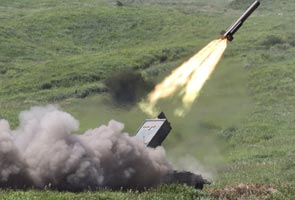Beijing: Beijing is accusing Japan of making irresponsible remarks in its new defense guidelines targeting China.
Foreign Ministry spokeswoman Jiang Yu says China is a force for peace and development in Asia and threatens no one.
She accused Japan of falsely claiming to represent international opinion and said no country has the right to make irresponsible comments concerning China's development.
The Japanese guidelines announced on Friday say Tokyo needs to focus on the rise of China and not the Cold War threat of Russia in defining its security goals.
The guidelines, which were approved by the Japanese Cabinet, also call for a stronger alliance
with the United States - Japan's biggest ally - and expanded security networks with regional partners, including South Korea and Australia.
To bolster its forces, Japan will acquire new submarines and fighter jets, upgrade its missile defence capabilities and make its ground forces more mobile so that they can quickly respond to emergencies in southwest Japan.
The guidelines paint China as a bigger threat than Russia, and say Japan is shifting its defence emphasis from the northern island of Hokkaido to islands in the south, such as Okinawa and territories claimed by both Tokyo and Beijing that have recently led to diplomatic tensions.
The Japan-US alliance remains "indispensable" to Japan's security, the guidelines said, calling for stronger cooperation between Japanese and the 47-thousand US armed forces based in this country. It also urged Japan to use its diplomatic and defence capabilities "more proactively."
The guidelines cited "changes in global power balance" and noted a relative decline of America's strength and rise of emerging countries such as China and India, saying Japan should pursue its own efforts to enhance missile defence capabilities to protect itself from threats by China and North Korea.
"While we will downsize the numbers of tanks and missiles which were installed under the system corresponding to the Cold War period, we will expand our defence system by focusing on alert and monitor mechanisms, maritime patrol, aerial defence, and deploying ballistic missiles in areas including the South Western area (which faces China)," said Yoshito Sengoku, Japanese Chief Cabinet Secretary, speaking at a news conference in Tokyo on Friday.
The guidelines said China's rapid military buildup and lack of transparency are matters of concern.
It said North Korea's military activity is a "pressing and serious destabilising factor" for Japan and causes grave problems for international nonproliferation efforts.
In Beijing, officials said Tokyo was wrong in seeing China as a threat, calling the guidelines "irresponsible."
Foreign Ministry spokeswoman Jiang Yu said China was a force for peace and development in Asia and threatened no one.
Relations between Tokyo and Beijing deteriorated quickly over a longstanding dispute over islands in the East China Sea called Diaoyu in China and Senkaku in Japan after a 7 September collision between a Chinese fishing boat and Japanese coast guard vessels, an incident that has raised public and government concern over China's military strength.
Washington has urged Japan to play a greater security role in the region, and proposed a three-way military alliance that would include South Korea.
Regarding specific deployments, Japan plans to send more ground troops to its southwestern islands. The troops will use mobile radar and fly reconnaissance aircraft to monitor the surrounding seas, according to a separate five-year defence plan through March, 2015, also approved on Friday by the Cabinet.
The plan did not specify the location but Japanese media have said 100 ground troops will be sent to Yonaguni, in Okinawa prefecture, where Japan currently has no troops.
Placing them on the island that is closer to China, Taiwan and the disputed islands could be contentious.
Japan will also increase its submarines to 22 from the current 16 and add a destroyer, bringing the total fleet to 48, including six Aegis radar-equipped warships.
Tanks will be reduced to 400 from 600 but the number of ground forces maintained at roughly the current level of 150,000.
The guideline also proposed joining in international arms development or production to bolster the defence industry, which is largely limited to the domestic market.

No comments:
Post a Comment